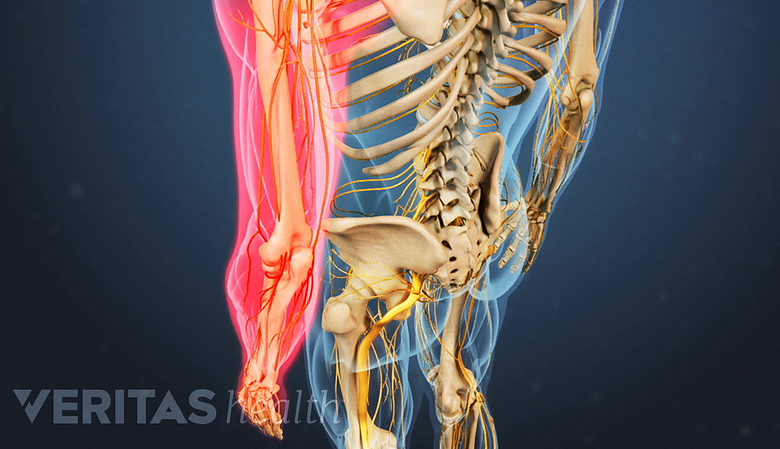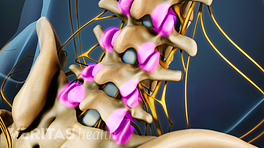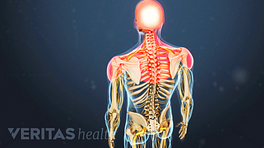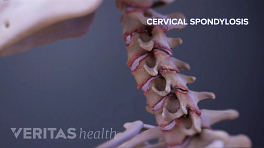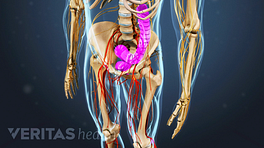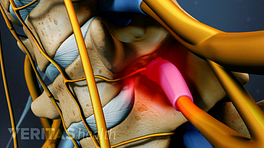The symptoms and signs of cervical spondylosis accompanied by cervical myelopathy may be localized within the cervical spine or may spread to other parts of the body, including the legs.
In This Article:
- Cervical Spondylosis with Myelopathy
- Cervical Spondylosis and Cervical Myelopathy Symptoms
- Diagnosis of Spondylosis with Cervical Myelopathy
- Cervical Myelopathy Treatment
- Cervical Spondylosis with Myelopathy Animation
Common Symptoms and Signs of Cervical Spondylosis and Cervical Myelopathy
Weakness and numbness in the arm and fingers are common symptoms of Cervical myelopathic spondylosis.
Patients with cervical spondylotic myelopathy often have some combination of the following symptoms:
- Weakness, numbness or clumsiness of the arms, hands, and/or fingers
- Altered walking ability perceived as poor balance, weakness, heaviness or numbness in the legs
- A painful, stiff neck
- Variable degrees of radicular arm pain (pain that radiates down the arm and possibly into the fingers).
Though cervical spondylotic myelopathy is painless in more than 50% of patients, when pain is present it may be described as a stabbing, burning sensation or a persistent dull ache radiating throughout the arms to the forearms, at times to the fingers, associated with "pins and needles" paresthesias extending into the fingers.
See Answers to Common Spondylosis Questions
Patients often comment about dropping objects accidentally or having trouble fastening their clothes. If prolonged, there may be associated muscle wasting and overt loss of sensation to vibration, pinprick sensation, and pain and thermal sensation.
In addition, on examination, the doctor may notice increased resting tone of the arms and legs, focal weakness of muscles supplied by affected nerve roots, unsteadiness of gait, and abnormally brisk deep tendon reflexes.
Coordination may be affected as well, including impaired fine finger movement, as well as difficulty with coordinated walking, such as seen with reverse tandem gait. Neck flexion may induce electrical-like sensations running down the spine (referred to as Lhermitte's phenomenon). Sexual function may be adversely affected as well.
As the impairment to spinal cord function (referred to as myelopathy) progresses, both legs weaken and become progressively spastic. Bowel and bladder sphincter control may then be altered. In advanced cases, gait will become progressively more difficult without aid by a cane or a walker.

